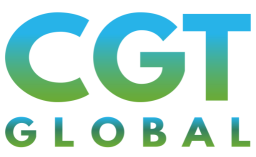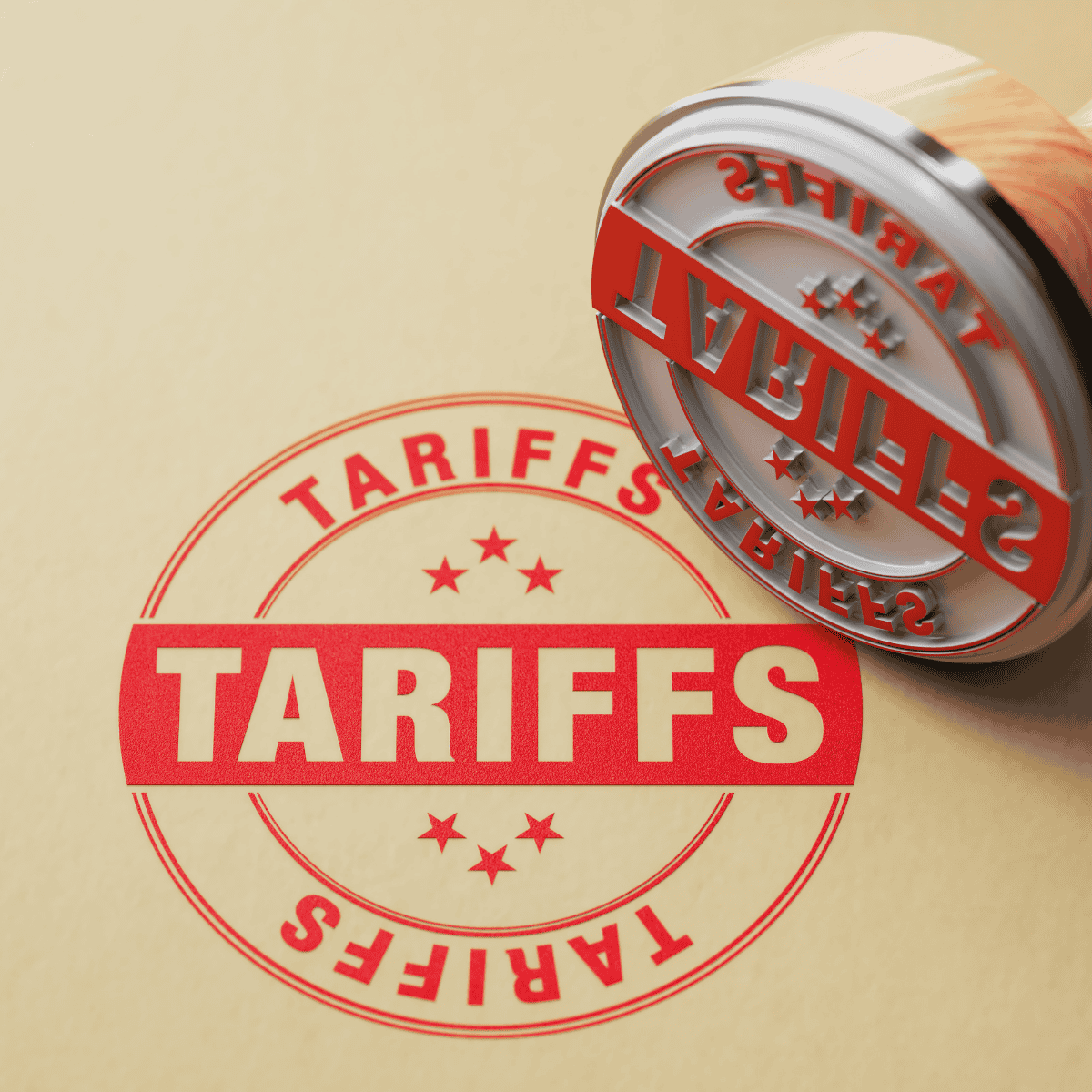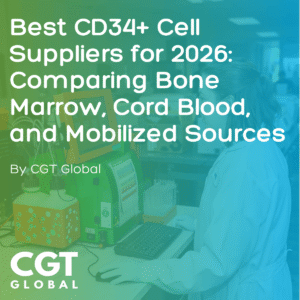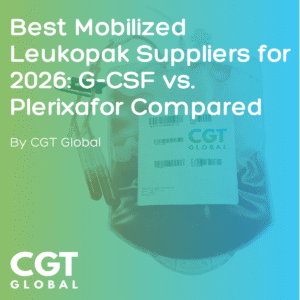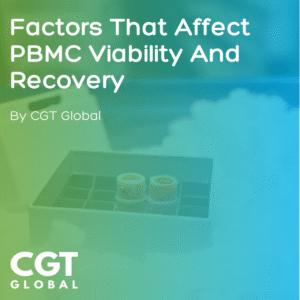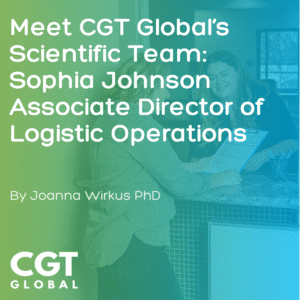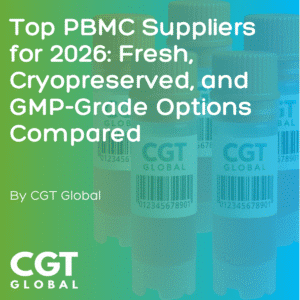By CGT Global
Estimated reading time: 7 minutes
Table of contents
- A Tough Pill to Swallow: Costs Are Going Up, Margins Are Getting Squeezed
- Resilience Is the New Efficiency
- Time to Rethink Sourcing—and Fast
- Tech Transfers Are Growing Up—They Have To
- What Smaller Biotechs Need to Know
- California’s CGT Ecosystem: Facing Challenges, Seizing Opportunities
- Looking Ahead: This Is the New Normal
The latest round of U.S. tariffs didn’t just shake up the headlines—it shook the very foundations of global pharma supply chains. And while most of the buzz has focused on traditional drugmakers, let’s be clear: cell and gene therapy manufacturers aren’t sitting this one out.
For companies working with high-value, time-sensitive materials like Leukopaks, PBMCs, CD34+ cells, and viral vectors, even subtle disruptions can have massive downstream consequences. Now, with added costs, uncertain delivery timelines, and sourcing challenges entering the picture, the CGT sector faces a new layer of complexity—and opportunity.
A Tough Pill to Swallow: Costs Are Going Up, Margins Are Getting Squeezed
Tariffs on raw materials and APIs are already sending pricing shockwaves through the supply chain. Even if CGT products don’t rely directly on foreign-made small molecules, many of the tools and reagents we use do—think cryoprotectants, cell culture media, transfection reagents, and single-use systems.
For CGT innovators, where batch sizes are small and every dose is precious, rising costs can’t simply be “spread out.” Instead, manufacturers are being forced to make hard decisions:
- Absorb the cost and protect partnerships, at the expense of margin.
- Pass it on and risk pricing out critical research or early-phase development.
Neither is ideal—especially when your therapy is saving lives.
Resilience Is the New Efficiency
The companies that will weather this shift best are those that don’t just cut costs—they build resilience.
At CGT Global, we’re seeing forward-thinking clients reassess their operations through a new lens:
- Streamlining donor-to-lab logistics to reduce idle time and cold chain risk
- Tightening equipment utilization in GMP suites to prevent unplanned downtime
- Reevaluating indirect labor and overhead allocation to lean into core capabilities
Even small tweaks—like adjusting reporting layers or improving changeover protocols—can generate major impact in this environment.
Time to Rethink Sourcing—and Fast
For years, the CGT industry has leaned heavily on global suppliers. China, in particular, became a go-to for cost-effective reagents and raw materials. But that convenience now comes at a premium—and with regulatory friction.
The idea of localizing supply chains is gaining traction. But in CGT, it’s not as easy as switching vendors:
- Changing your vector reagent? Get ready for new validation protocols.
- Sourcing cryopreservatives from a different manufacturer? That means bridging studies.
- Swapping out a component in your closed system process? Hello, tech transfer chaos.
This isn’t plug-and-play. It’s rip-and-replace—with a side of FDA paperwork.
What’s Really at Stake: The China-to-U.S. Component Shift
It’s easy to talk about “reshoring” or “decoupling,” but the real work begins when you break down what’s actually coming from China—and what it’ll take to replace it.
Many of the reagents, materials, and tools used in CGT manufacturing are sourced from Chinese suppliers. These aren’t optional items—they’re mission-critical to everything from vector production to cryopreservation. As tariffs rise and regulatory scrutiny tightens, CGT companies are now asking a tough question: who else can supply these at the quality and scale we need?
Your U.S. Sourcing Playbook: CGT Materials and Domestic Alternatives
| Component Type | Typical Use in CGT | Common China-Linked Sources | U.S.-Based Alternatives |
|---|---|---|---|
| Transfection Reagents | Gene delivery for viral vector production | PEI, lipid-based reagents from Chinese suppliers | Thermo Fisher Scientific, Mirus Bio, Sartorius |
| Plasmid DNA | Viral vector production | Contract manufacturers in China | Aldevron, VGXI, Charles River |
| Cell Culture Media | Cell expansion and maintenance | Basal media and supplements from Chinese manufacturers | Thermo Fisher Scientific, Bio-Techne, ACROBiosystems |
| Cryopreservation Agents | Cell storage and transport | DMSO and cryomedia from Chinese suppliers | MP Biomedicals, OriGen Biomedical |
| Single-Use Systems | Bioreactor bags, tubing, filters | Components manufactured in China | Thermo Fisher Scientific, Cytiva, Liquidyne |
| Magnetic Beads | Cell separation and purification | Beads and reagents from Chinese suppliers | Miltenyi Biotec (Germany/U.S.), Thermo Fisher Scientific |
| Viral Vectors | Gene delivery vehicles | Contract manufacturers in China | Catalent, Thermo Fisher Scientific, Bio-Techne |
| Cytokines and Growth Factors | Cell differentiation and proliferation | Recombinant proteins from Chinese suppliers | Bio-Techne, PeproTech (a Bio-Techne brand), R&D Systems (a Bio-Techne brand) |
| Leukopaks and PBMCs | Starting material for cell therapies | Donor collections in China | CGT Global Request a Quote |
| Apheresis Equipment | Cell collection | Devices manufactured in China | Terumo BCT (U.S.), Fresenius Kabi (Germany/U.S.) |
Replacing even a single input can trigger new validation protocols, supply chain delays, and tech transfer documentation. That’s why CGT firms need partners who understand both the urgency—and the complexity—of the current trade environment.
At CGT Global, we’re helping clients navigate these shifts with supplier vetting support, alternate sourcing strategies, and donor-to-lab logistics built for this exact moment.
Tech Transfers Are Growing Up—They Have To
Let’s talk tech transfers. In the CGT world, they’re notoriously complicated—and now they’re becoming urgent.
Moving production closer to home sounds great until you realize how much knowledge transfer, documentation, and cross-functional coordination it requires. And the truth is, most companies aren’t fully ready for that.
At CGT Global, we’ve helped teams manage everything from T-cell expansion platform moves to GMP cryo storage scaling. The secret? Treat tech transfer as a program, not a project—complete with internal champions, standardized playbooks, and milestone-based tracking.
Because when time is short and tariffs are high, execution is everything.
What Smaller Biotechs Need to Know
Let’s face it—multinational pharma has the resources to adapt. Many are already onshoring capacity, building internal CDMO capabilities, and locking in strategic inventory. But for emerging biotechs and lean CGT players, this moment is harder.
Your options may look like:
- Partnering with CDMOs that already have local capacity
- Reassessing long-term supplier relationships
- Prioritizing dual-sourcing—even if it costs more up front
We’ve seen several firms accelerate M&A conversations and strategic alliances to share risk and scale faster. And we expect that trend to grow.
California’s CGT Ecosystem: Facing Challenges, Seizing Opportunities
California is a biotech powerhouse—and the recent tariff and supply chain shifts are shaking up its CGT sector in real time.
Sacramento and the greater California region host a growing cluster of cell and gene therapy innovators, donor collection centers, and manufacturing facilities. These local players depend heavily on a smooth flow of materials and reagents. Rising costs and delays pose real risks: slower clinical trials, squeezed budgets, and disrupted workflows.
But every challenge comes with a silver lining. California’s rich talent pool, robust research institutions, and growing infrastructure create fertile ground to:
- Build localized sourcing networks that reduce reliance on imports
- From bioprocessing reagents to cryopreservation supplies, California has the capability to reduce dependence on tariff-exposed imports by strengthening regional supply partnerships. Supporting local suppliers not only stabilizes logistics—it boosts the state’s biotech economy, creating jobs and increasing resilience. Work with at least two vetted vendors for each mission-critical supply. Create a California supplier database with contact info, capabilities, lead times, and backup vendors. Attend Biotech networking events such as
- BIO International Convention – June 22–25, 2025, in San Diego. This premier biotech event attracts over 20,000 industry leaders globally.
- California Life Sciences FAST Advisory Program – Offers intensive coaching for life science entrepreneurs to refine business models and strategies.
- Cell & Gene Meeting on the Mesa – October 6–8, 2025, in Phoenix, AZ. A key conference for senior leaders in cell and gene therapy, focusing on commercialization hurdles and supply chain strategies.
- Expand regional donor recruitment and same-day collection services
- With collection centers like CGT Global’s Folsom facility, California can lead in donor access and agility. Expanding these programs regionally—especially with recallable donors for clinical studies—provides researchers with timely, consistent material while keeping the entire supply chain within state borders.
- Develop partnerships between academic centers, CDMOs, and manufacturers to accelerate tech transfers
- California’s academic and commercial ecosystem is uniquely positioned to fast-track tech transfers. By building more partnerships between research institutions (like UC Davis or Stanford), CDMOs, and therapeutic developers, the state can scale CGT production while retaining talent and IP locally.
At CGT Global, with our Folsom donor center and rapid logistics, we’re proud to support this ecosystem—helping California’s innovators turn supply chain pressures into competitive advantages.
Looking Ahead: This Is the New Normal
What’s clear is this: tariffs are just the beginning. The global trade environment is evolving fast, and biomanufacturers—especially in the precision world of CGT—can’t afford to play catch-up.
Yes, this is a challenge. But it’s also a chance to build smarter, more agile operations.
At CGT Global, we’re committed to helping clients navigate this moment with speed, clarity, and quality. Whether it’s same-day cell collections, custom donor recruitment, or clinical-grade processing, we know the terrain—and we’ve optimized every step of the path.
Now’s the time to get proactive. Your therapy—and your patients—can’t wait.
🧬 Need help navigating shifting supply chains?
Talk to CGT Global about customized sourcing, GMP support, and turnkey cell processing solutions.
We’re not just a vendor—we’re your long-term partner in therapeutic innovation.
